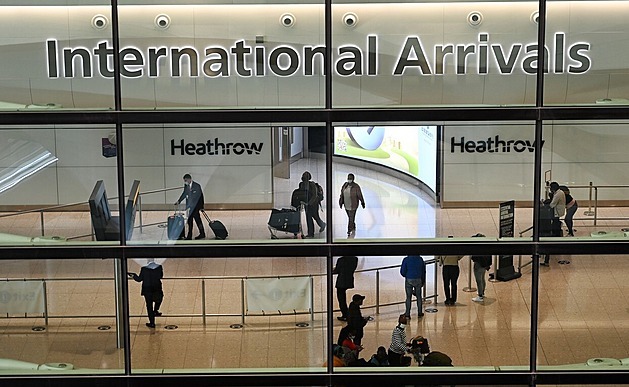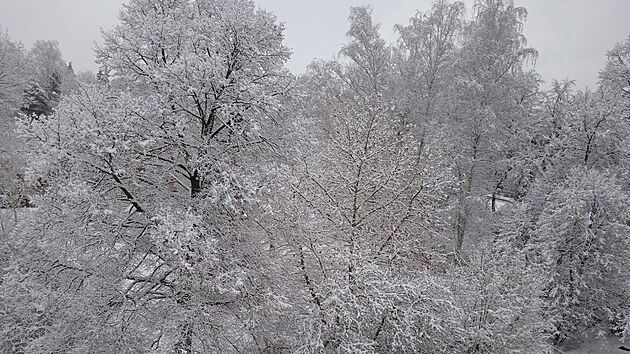A train with benzene flew into the switch more than twice the speed allowed

“The Railway Inspection Authority today in cooperation with the carrier Ostrava Transport Company – Cargo, AS, has completed an analysis of the speedometer of the freight train. The entrance signal of the railway station ordered the driver to drive at a maximum of 40 kilometers per hour, but the train passed this signal at 95.2 kilometers, ”said General Inspector Jan Kučera.
According to him, the train drove at 94.8 kilometers per hour and then derailed in them. « The train speed during derailment was 137 percent higher than it was allowed, » Kučera said.
“Please note that the Rail Inspectorate saves the cause and circumstances of the occurrence of a serious accident, it does not deal with responsibility for a crime. The investigation is only at the beginning and in no case on the basis of the detection of the Railway Inspectorate, it is not possible to state the guilt of the driver, as the technical defect of the locomotive or on the set is not yet excluded, ”added Kučera, adding that the inspectors have not yet heard the driver.
The Ostrava Transport Company – Cargo said in response that the driver was experienced, professionally trained and had many years of experience. The company accepts the preliminary conclusions of the inspectors with regret and cooperates with the investigators.
“At the same time, we carry out a detailed internal revision of all train management processes to identify and implement effective measures that will contribute to higher safety and minimize the risk of similar situations in the future. If the investigation demonstrates systemic shortcomings, we are ready to take adequate measures and actively participate in the solution of the damage, ”said Petra Jamrichová on behalf of the company.
The result of the train accident, the subsequent fire and the leakage of toxic chemicals are estimated to be estimated to be about a quarter of a billion crowns – 75 million for infrastructure, 50 million on the train and 100 million on the environment.
Measures work, Hladík said
In the vicinity of the accident, remediation measures continue to be carried out, and according to today's statement of the Minister of the Environment Petr Hladík (KDU-ČSL), the amount of benzene in the groundwater is reduced so far.
The volatile substance is drained from the probing pits, twenty, the adjacent lake is protected by a norno wall. Hladík reassured that there was no risk in the atmosphere.
“I have a slightly optimistic report, to this morning the measurements are slightly lower than in the center. 0.67 milligrams per liter have been measured, and the limit of fish hazards is 3.5 milligrams, ”outlined the Minister.
“We are still less than the critical limit. From this point of view, it seems that the measures that have been taken here, that is, drain the benzene that mixes with groundwater is functional, ”he added.
The Regional Hygiene Station said in the afternoon that the inhabitants of Hustopeče nad Bečvou may not be worried about the quality of drinking water, but due to preliminary caution it does not recommend using water from wells in the cottage area by the Bečva River. Specifically, the cottages defined objects with registration numbers 31 and 45.
On Wednesday, it also took samples from five selected wells, one in one discovered the presence of benzene. 'The found value is below the hygienic limit of 1 microgram per liter, specified by a decree indicating the hygienic requirements for drinking and hot water. We will continue to monitor water quality on Friday, March 7, ”the hygienists summarized the result.
Unprecedented accidents within Europe
According to Hladík, it is necessary to ventilate them after the tank drainage is to be ventilated before experts will be able to dispose of wagons wrecks. The remains of the tanks will be « cut » on the spot by heavy technology, then the rail and contaminated soil will be removed.
The extent of the accident called Hladík unprecedented. “According to firefighters' experience, such a accident has not been documented in Europe over the past thirty years. Even the technological procedures that do the integrated rescue fire brigade, professional companies and railway administration are unique in certain places. The knowledge will also be used to share experience with colleagues from all over Europe, ”he said.
His words were confirmed by the commander of the railway fire brigade from Přerov Ondřej Kovácz, who intervened from the beginning. According to him, the extent of the damage to the railway infrastructure will only be shown after the wagons are removed.
« I assume that the whole area will have to be renewed – even columns and their beams were so burdened due to thermal radiation that they lose the capacity of the load, » he presented.
Firefighters still evaluate the whole intervention as extremely dangerous, because there is still no risk of igniting a vapor of benzene, which can cause explosion and other fire.
The director of the regional fire brigade Karel Kolářík said that out of 17 tanks filled with 1,020 tons of toxic benzene, firefighters managed to capture 360 tons of fabric.
“Two tanks managed to protect them and the fire did not hit them. The other three were hit, but the fabric did not escape and pumped them into spare tanks, ”he summed up, saying that the firefighters are pumping the last tank today.
« From our point of view, this is the tank number 13. As soon as it is drawn, we will start another phase, which will be removing the remnants of benzene from the tanks. In the following phase, we would make us a big problem, and couples of benzene form an explosive concentration inside the wagons. We need to have a safe environment for subsequent handling of cars, ”Kolářík described.
To reduce the concentration inside the wagons and in the immediate vicinity, but the rough cleansing of twelve cisters, today the firefighters will serve a locomotive with a steam generator. “We will try from the first wagons of steaming tanks. It is a procedure that we have consulted with experts, ”said the regional director of firefighters.
How long the work will take and when it is possible to manipulate damaged tanks, could not estimate. In the event that the selected procedure proves to be ineffective or if another technique is needed, other forces and resources will be called.
Restoring trains operation remains unclear
Restoring the operation of trains on the line between the stations of Hranice in Moravia and Valašské Meziříčí will depend on the depth of the contamination of the rail and the bottom. The train accident and the following massive fire damaged the track in about a half -kilometer section. However, soil extraction can only be done after the distorted tanks can be cleared.
“The decisive factor will be to what depth we will have to deposit the body of the track. The probes go up to four meters, but if we should remove the railway body to such a depth, we are no longer talking about weeks, but about lower orders of months, ”said Jiří Svoboda.
“The following construction even at the cost of makeshift operation is not so difficult. I was at first optimistic that it would be in the lower weeks, but since the contamination is there now, we'll see. It will be decisive to what depth the substance has gotten, and secondly, how quickly it will evaporate, which the weather will wish for us so far, ”he added.
Experts will also focus on agricultural land
The level of contamination of agricultural land should show soil samples analysis. Experts from the Central Audit and Test Institute of Agricultural (CISTA) will be removed in the area according to the persistent wind at the time of the fire, it should do this on Friday.
« The CISTA will perform basic screening of the state of agricultural land in the near future consisting in the collection and analysis of soil samples from the surrounding land, especially due to the content of polycyclic aromatic hydrocarbons, » outlined the spokesman of the Institute Petra Hrabčáková.
“As for the question of possible contamination, the subsequent procedures are based mainly on the evaluation of the degree of contamination in terms of its scope and severity. From the point of view of other proposed procedures, it is therefore necessary to have this data available, ”she added.
Samples are collected by experts on selected land with agricultural land and their localization will be determined on the basis of a circular grid scheme, which is used in cases with a known point source of contamination.
“The main sampling area will lie in the direction of the predominant wind at the time of burning, that is to the northeast to the villages of Poruba and Palačov. We expect that on the basis of the results obtained it will be possible to determine the level of contamination of land, the effect of fire and possibly decide to expand the area of interest and its import, ”added Hrabčáková.







